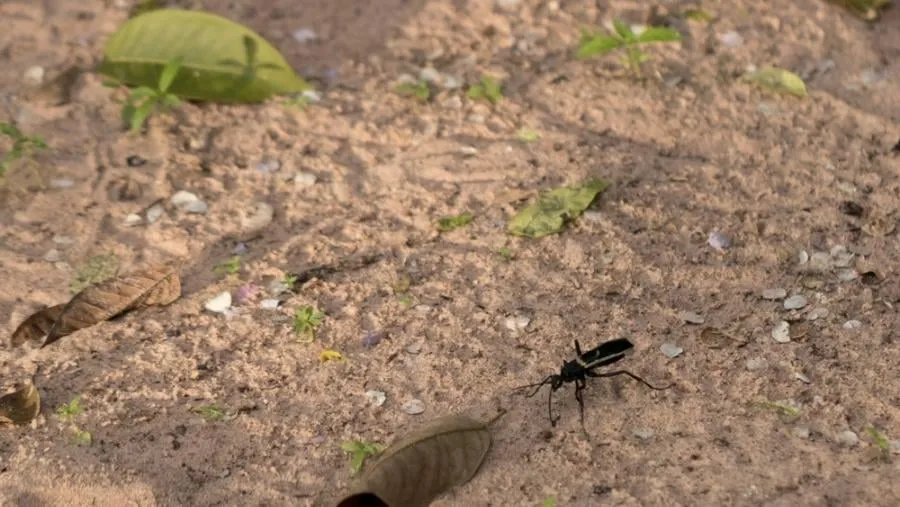What are Tarantula Hawks
Tarantula Hawks are large, solitary wasps belonging to the Pompilidae family. They are renowned for their striking appearance and their brutal hunting practices. These wasps are named for their primary prey — tarantulas. The relationship between the tarantula hawk and the tarantula is a fascinating example of predator-prey interaction, and understanding it provides insight into the complex dynamics of ecosystems. They play a vital role in controlling tarantula populations, showcasing the intricate balance of nature. The wasp’s life cycle, behavior, and appearance all reflect its specialized role as a fearsome predator and a critical component of its environment. Their existence emphasizes the diversity and complexity of the insect world, offering researchers a fascinating subject of study and observation.
Appearance and Characteristics
Size and Color
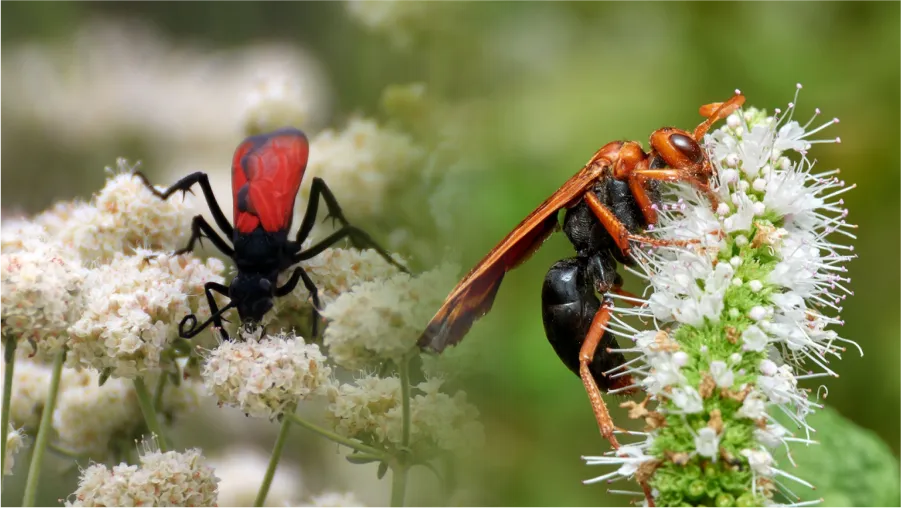
Tarantula hawks are among the largest wasps in the world. They exhibit a distinctive appearance that sets them apart. The wasps are typically between 1 to 2 inches long, with females being larger than males. Their bodies are characterized by a striking combination of colors. Most tarantula hawks have a metallic blue-black body, contrasted by wings that can range from a dark smoky color to a vibrant orange or reddish-brown. This bold coloration serves as a warning signal to potential predators. Their appearance is an evolutionary adaptation, as it deters most predators due to the potent sting they possess. This visual display is a critical element in their survival strategy, allowing them to thrive in their environment by avoiding unnecessary confrontation.
Habitat and Distribution
Where They Live
Tarantula hawks are primarily found in the warmer regions of the world. Their habitats include deserts, scrublands, and grasslands. They are native to various parts of the Americas, with the highest diversity found in the southwestern United States and parts of South America. Their distribution is closely linked to the presence of tarantulas. These wasps tend to reside in areas where their prey is abundant. This preference ensures that they have a consistent food source. They are highly adaptable insects, able to thrive in harsh conditions. Their presence indicates a healthy ecosystem, where both predator and prey can flourish. They are also commonly found in disturbed areas, such as along trails and roads, where they hunt and nest.
5 Amazing Facts About Tarantula Hawks
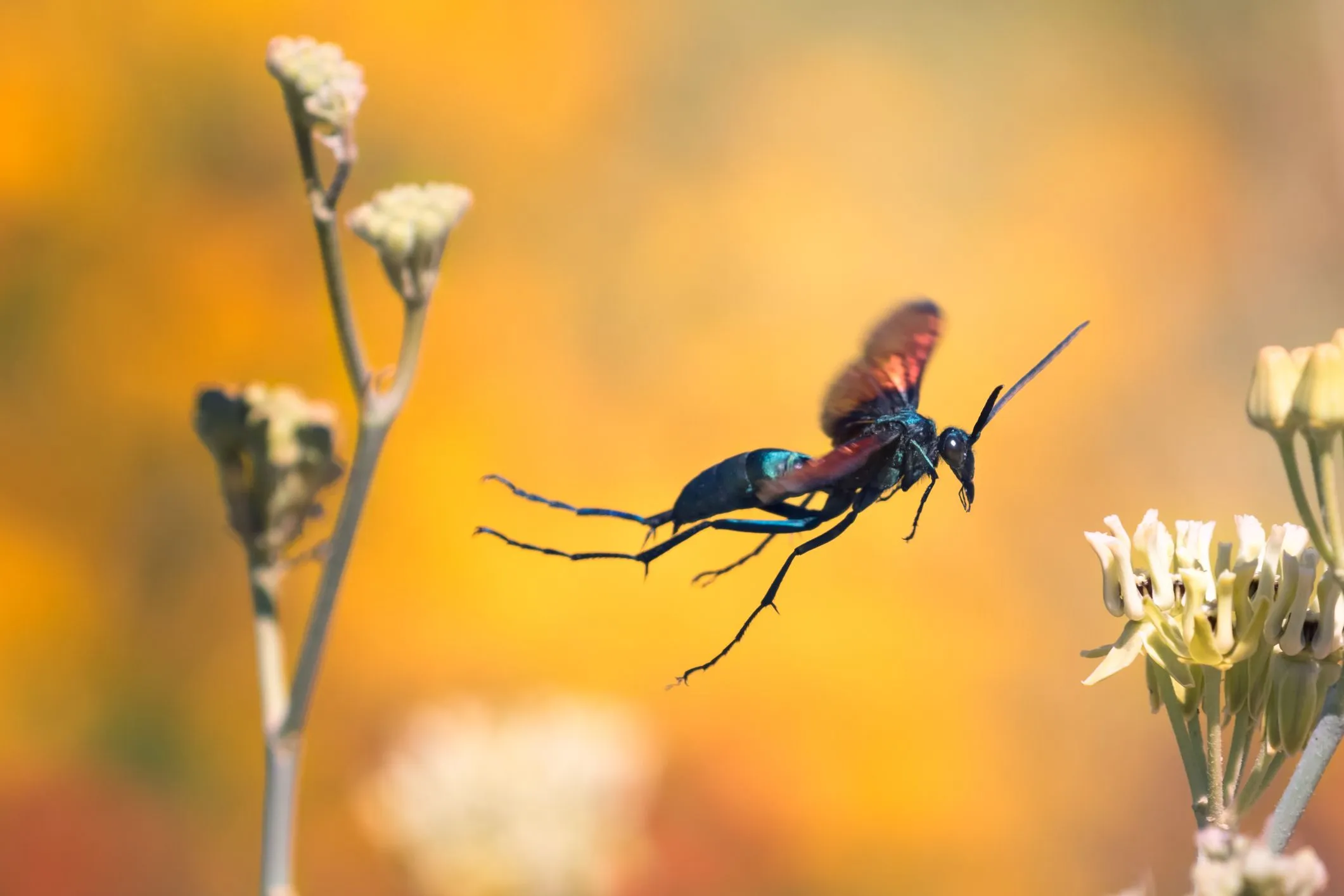
The Sting and Its Effect
The tarantula hawk’s sting is infamous for being one of the most painful stings in the world. The sting is primarily used for paralyzing tarantulas. It is delivered to the tarantula’s nervous system, which renders the spider immobile. While the sting is excruciating, it is not usually fatal to humans. The pain, however, is intense and can last for several minutes. The venom is composed of various compounds that affect the nervous system, causing immediate and debilitating pain. The severity of the sting has been described by many as a searing pain that immobilizes the affected area. Despite the pain, the sting is rarely life-threatening to humans. The venom is designed to subdue the tarantula, not to harm mammals. This remarkable adaptation is an integral part of their hunting and reproductive strategies.
Hunting and Paralyzing Tarantulas
The process of hunting and paralyzing a tarantula is a remarkable display of predatory skill. The female tarantula hawk actively seeks out tarantulas. Once a suitable target is found, the wasp will engage in a series of maneuvers to overcome the spider’s defenses. The wasp’s goal is to deliver a paralyzing sting. It carefully positions itself to avoid the spider’s fangs and chelicerae, which are capable of delivering a venomous bite. The wasp will sting the tarantula, injecting its venom into a nerve center. The venom paralyzes the spider, rendering it helpless but alive. The wasp then drags the paralyzed tarantula back to its burrow or a pre-existing nest to prepare it for the next stage.
Nesting and Reproduction
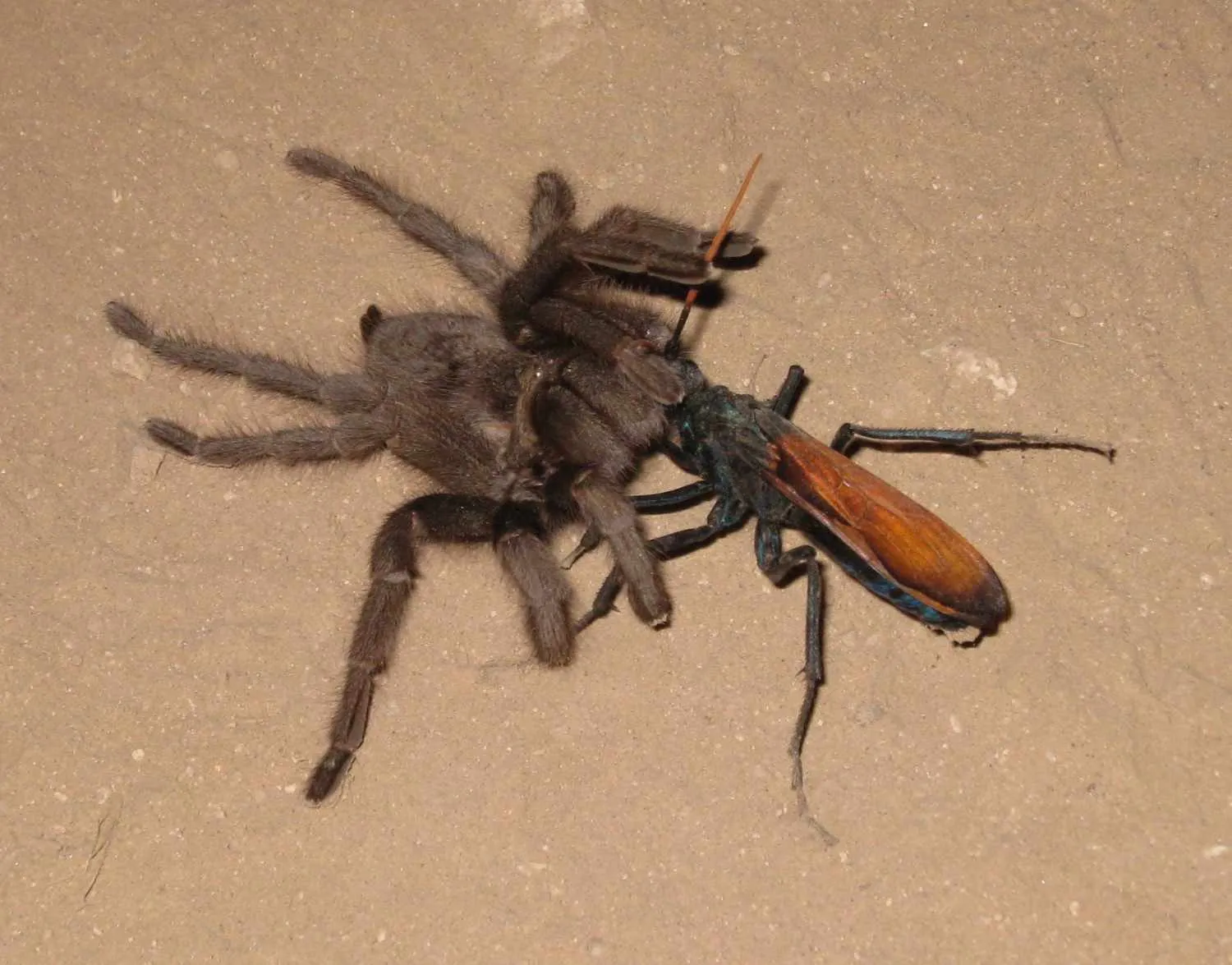
Tarantula hawks display fascinating nesting and reproductive behaviors. After paralyzing a tarantula, the female wasp will drag the spider to a pre-excavated burrow. This burrow serves as a nursery for the wasp’s offspring. The wasp will then lay a single egg on the paralyzed spider’s abdomen. The egg hatches, and the larva begins to feed on the tarantula. The larva consumes the spider from the inside out, ensuring the tarantula remains fresh for as long as possible. The larvae consume the non-essential organs first, allowing them to continue feeding on the still-living spider. The tarantula hawk larva continues to grow and develop, eventually pupating within the empty spider carcass before emerging as an adult wasp. This process highlights a complex life cycle and demonstrates the wasp’s specialized adaptations for survival.
Life Cycle
The life cycle of a tarantula hawk is a captivating example of insect metamorphosis. It begins with the female wasp paralyzing a tarantula and laying a single egg on its abdomen. The egg hatches into a larva, which begins to feed on the paralyzed spider. The larva grows and molts several times during its developmental stages. It feeds on the tarantula for several weeks, consuming the spider from the inside out. Once the larva is fully grown, it pupates within the empty exoskeleton of the spider. The pupa undergoes metamorphosis, transforming into an adult wasp. The adult wasp emerges from the pupal stage and begins its own life cycle. It then finds a mate and repeats the process, ensuring the continuation of its species. The entire life cycle can take several months to complete, depending on environmental conditions and the availability of prey.
Diet and Feeding Habits
What They Eat
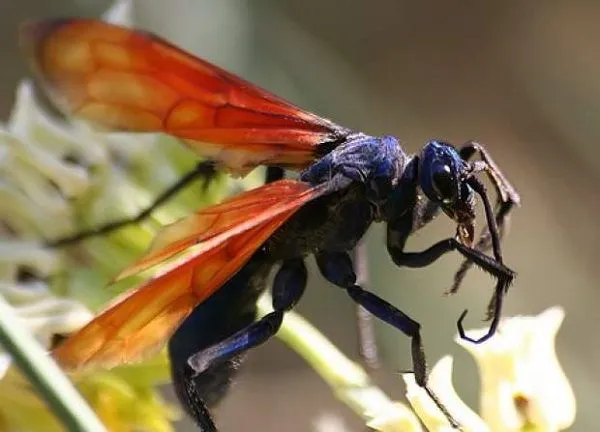
The primary diet of tarantula hawks is the paralyzed tarantulas that they hunt. The wasp’s larvae feed exclusively on the spider’s body. Adult tarantula hawks have a more varied diet. They will consume nectar from flowers to obtain energy. The nectar serves as a source of carbohydrates for the wasps. They are also known to feed on the sap of certain trees and fruits. This diversified diet helps them supplement their energy reserves. While the larvae are strictly carnivorous, the adults are omnivorous, which allows them to survive in a broader range of habitats. This dietary flexibility ensures the survival of the wasps. They are an integral part of the local ecosystem and contribute to the overall balance of the environment.
Defense Mechanisms
Tarantula hawks have several defense mechanisms to protect themselves. The most prominent is their potent sting, which serves as a deterrent to predators. Their warning coloration also plays a critical role in defense. The bold black and orange patterns signal to potential attackers that they are venomous and dangerous. Besides their sting, the wasps can also use their mandibles to bite. They may also employ evasive maneuvers, such as rapid flight. The combination of these defenses makes them formidable predators. They are equipped to survive and thrive in their environments. These adaptations demonstrate the complex strategies that have evolved to protect them. This ensures their survival in the wild, while also allowing them to hunt and reproduce successfully.
Other Predators
Despite their defenses, tarantula hawks are not immune to predation. Birds, especially those adapted to eat insects, may prey on tarantula hawks. Other insects, such as larger wasps or mantids, could also pose a threat. In their larval stage, tarantula hawks are vulnerable to attacks. They rely on the safety of the spider’s nest, but they can still be targeted by other predators. The presence of other predators keeps the tarantula hawk population in check. They demonstrate the intricate food web of the ecosystem. Although they are fierce hunters, tarantula hawks are still part of a complex ecological balance. This ecological balance ensures that the population is maintained within the ecosystem’s overall parameters.
Conservation Status
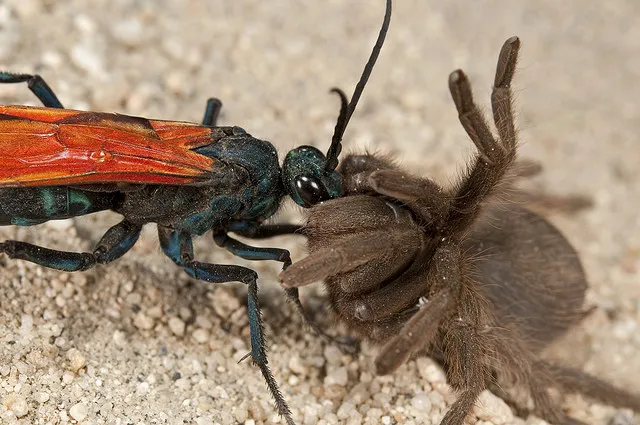
Threats and Risks
The threats to tarantula hawk populations are not as severe as those faced by many other species. However, habitat loss and pesticide use pose risks to them. Destruction of their natural habitats, such as deserts and grasslands, reduces the areas where they can hunt and nest. Pesticides, used for agricultural and pest control purposes, can directly affect tarantula hawks. They can also affect their prey. Climate change poses potential long-term risks. Changes in temperature and rainfall patterns can impact the availability of tarantulas and the plants from which the wasps get their nectar. Understanding these threats is essential for ensuring the long-term survival of tarantula hawks.
How to Protect Tarantula Hawks
Protecting tarantula hawks involves various measures. Habitat conservation is crucial. Protecting and restoring the natural habitats where they reside is essential. Reducing or eliminating pesticide use in areas where they are found also helps. This action minimizes the direct and indirect impacts of harmful chemicals on their populations. Promoting public awareness about the importance of tarantula hawks is another vital step. Educating people about their role in the ecosystem and the benefits of their presence can foster a sense of stewardship. Supporting conservation efforts and participating in citizen science projects contributes to collecting valuable data about tarantula hawk populations and their habitats. By implementing these strategies, we can help secure the future of these fascinating creatures.
